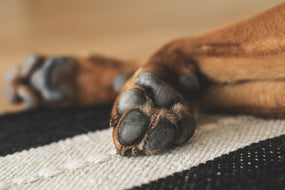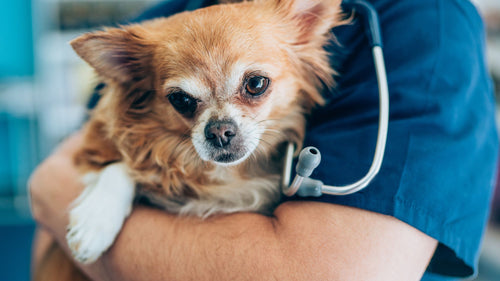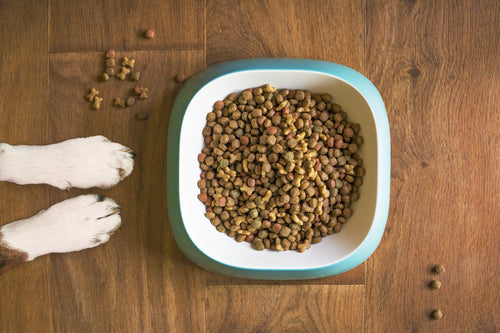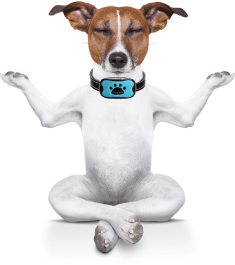Everything You Need to Know About Dog Castration (Neutering)
Castration of dogs is the surgical removal of the testes in males. Spraying is the removal of the uterus and ovaries in females, as a result of which the animal loses its ability to reproduce forever. Sometimes castration is confused with sterilization, but the differences between the two operations are tangible. During sterilization, seminal ducts are simply tied up to male dogs, and only the uterus is removed in females. This allows the animal to continue to mate, but they will not be able to have offspring. After castration, the animal is absolutely indifferent to “love affairs”.
Castration has both fierce supporters and real opponents. To make the right decision, pet owners should know the pros and cons of neutering dogs.
Positive Aspects of the Dog Castration
- The animal almost always becomes calmer. Males show no interest in females, female dogs no longer have estrus;
- The behavior of the dogs changes for the better (no marks are put in the apartment, there is no aggression towards fellow tribesmen of the opposite sex);
- The animal after castration can perform its functions (guard the house, drive the animal on the hunt, serve as a guide for the blind, etc.), without being distracted by sexual desire.
- Dogs after castration are less likely to get into any trouble (road accident, fights with other animals, etc.). Simply put, pets go outside not for the sake of excitement and in search for a sexual partner, but for exercise and using the bathroom;
- Castration reduces the risk of many dangerous diseases (in females it is oncological processes of the reproductive organs, and in males - tumors of the testicles and prostate gland, prostatitis, etc.).
Disadvantages of the Dog Castration Operation
- The need to put the animal under general anesthesia, which sometimes leads to allergic reactions, heart failure, respiratory system disorders, stomach and intestinal disorders;
- Complications after castration (we will talk about them below);
- Decreased activity in a neutered dog, which often leads to obesity, joint problems, disruption of the brain and other problems.
What Is the Best Age for Dog Castration?
The most appropriate age for neutering dogs depends on the size of the animal and the state of its health. As a rule, small dogs (weighing no more than 10 kg) are castrated at 6-8 months, and animals of large and giant breeds at 1.5-2 years.
Theoretically, castration can be performed on a 3-5-year-old dog. But animals over 7-8 years old usually undergo surgery for medical reasons. Also, older dogs do not tolerate anesthesia well, and have a longer recovery period after surgery.

How to Prepare Your Dog for Castration?
No good specialist will castrate a dog on the day of the veterinarian visit. To begin with, urine and blood tests are taken. If necessary, x-rays and ultrasounds of internal organs (and the heart) are performed. If the owner decides to neuter the pet, it is important to consider the following points:
- The dog must be free of ecto- and endoparasites before castration. Even if the pet does not have clear signs of the presence of internal or external pests, it is necessary to carry out prophylaxis against fleas, ticks and worms 3-4 weeks before castration.
- The animal should be vaccinated against plague, parvovirus, enteritis, piroplasmosis and other ailments even before the operation. Vaccinate dogs after prophylaxis or disposal of external and internal parasites.
- 3 days before castration, animals are switched to light food (dietary dry foods or natural food: lean meat and fish, vegetables, dairy dishes, minimum cereals, exclusion of fatty and flour products).
- On the eve of the operation, it is important to prepare a carrier for the dog, clean bedding, disposable napkins, antiseptics (the names of the drugs will be suggested by the veterinarian), a special collar.
- The house where the dog will be recovering after castration should be put in order (wipe away any dust, wash the floors with a disinfectant solution).
- The dog is fed 10-12 hours before the operation, and water is given to drink no later than 6 hours before the operation.
Post-Castration Dog Care
When the pet has survived the removal of the testicles (or the uterus with ovaries), rehabilitation will takes approximately 3-4 weeks. Caring for a dog after castration includes the following points:
- Providing rest. It is better to not have guests, parties, visit crowded places for a while.
- Position of a warm place for the castrated animal. It is advisable to take an outside dog into the house for a while in order to exclude unpleasant moments such as inflammation in the wound area.
- Monitoring the condition of the dog. After castration, it is important to monitor the temperature of the animal, respiratory rate, pulse, and the shade of mucous membranes. If something doesn't go according to plan, it's best to call your veterinarian immediately.
- During recovery from anesthesia, it is required to monitor the animal. Do not let your dog roam out into the street, it is better not to allow him to jump, run, in order to avoid injury.
- A dog that has come out of anesthesia can be given a little water to drink, but it is better for them not to eat food in the first hours after the anesthesia wears off. After the introduction of anesthesia, it is difficult for a pet to swallow nausea is often present.
- In the first hours after the operation, the animal may relieve itself. Of course, it should not be scolded for it. As soon as the dog finally wakes up from anesthesia, you can go for a very short walk so that the dog has a chance to relieve itself.
- If the animal shows interest in the seam (licks or gnaws at the wound), it is wiser to put a protective collar on its neck.
- Generally, after castration, the dogs are given antibiotics and the wound is treated with an antiseptic. It is important to follow all the instructions of the veterinarian.
- Approximately 10 days after the operation, it is worth paying a visit to the clinic to remove the stitches (if self-absorbable sutures were not used).
- In the first 2 weeks after castration, it is better not to overload the dog with training. Within a month after the operation, it is generally better for the dog to have a very light routine (little running, sparse activity, no swimmings, no competitions, etc.).
Possible Complications After Castration
Castration is not the most difficult of operations, but it is better for the owner to know in advance about some of the nuances:
- Constipation. If the dog does not go to the toilet after neutering for more than 2 days, you can give him a mild laxative (contact your veterinarian).
- Suppuration of the seam area. Bloody or purulent discharge from the wound, swelling in the area of the operation usually occurs when antiseptic rules are not followed. Such a problem must be solved with the help of antibiotics after consultation with the doctor.
- Development of an abscess. This happens when the ovaries or testes are not completely removed. Here you cannot go without repeated surgical intervention.
- Seam divergence. Sometimes dogs lick their wounds so zealously that they damage the doctor's seam. If the wound has dispersed and bleeds, it is better to immediately go to the clinic so that the specialist will stitch it back up.
- Negative consequences of anesthesia. Vomiting (no more than 2-3 times), unsteadiness of gait, refusal to eat, cases of urinary incontinence, lethargy are phenomena that should not cause concern if no more than 1 day has passed after the operation.
Behavior of Neutered Dogs
Some owners believe that immediately after the operation, the animal will suddenly forget about instincts. In fact, the behavior of the dog changes after castration over the next 6-12 months. So, a dog castrated a few days ago may well follow a female in heat, counting on mating. However, within a few months after surgery, the dog's behavior will change.
Many owners are interested in whether the dog will stop marking after castration, getting involved in fights with other animals, and running after an individual of the opposite sex. It is important to understand that no operation can change an ill-bred doggie. If the owner is not used to controlling his dog while walking, for example, it will throw itself at everyone even after castration. If the puddles in the apartment have always been ignored, then this will continue to happen, even after the castration procedure.









